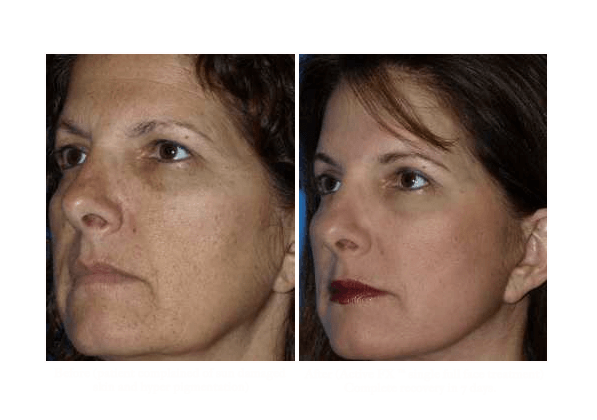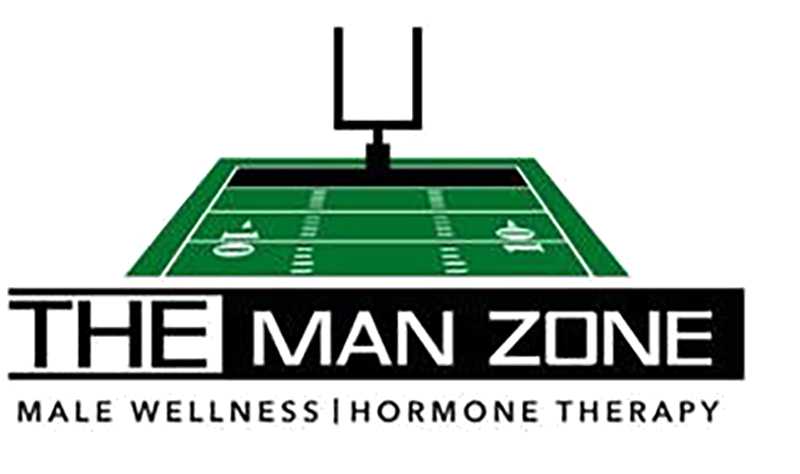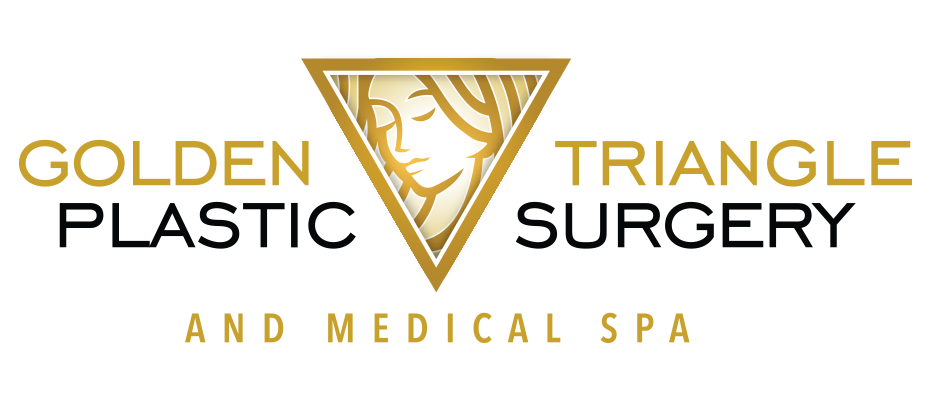Laser Skin Resurfacing in San Diego CA
In San Diego County and much of California we are blessed with sunshine for most of the year. Unfortunately this sun exposure, along with the normal aging process and acquired traits such as acne scars take their toll on our skin.
*Before and after photos and testimonials on this website are from actual patients who have given permission to have their photos/testimonials published. These photos and testimonials are for illustrative purposes only and no prediction of outcome is implied. Individual results may vary.
*Laser skin resurfacing, unlike a surgical facelift, seeks to improve facial appearance by targeting the more superficial layers of the skin. Whereas a facelift removes droopy bulges and sagging skin, skin resurfacing procedures improve wrinkles, acne scars, and uneven pigmentation on the skin surface. Lasers work by removing the outer layer of skin, which includes thickened and dead skin layers. Following this, the laser light causes restructuring of collagen in the dermis, or deeper layer of the skin. The overall effect is a tightening of the skin, with a smoothing out of fine wrinkles and other skin surface irregularities.
Acne scars respond well to deeper laser resurfacing, which produces a more controlled response than dermabrasion. Total FX™ (see below) is especially effective for treating acne scars in a variety of skin types.
It is important to understand that each face is different with regard to skin color, texture, and degree of wrinkling, and choosing the best resurfacing option can make a difference. Laser resurfacing has not eliminated other methods such as chemical peels and dermabrasion, which continue to play a role in skin resurfacing, but in many cases the laser has proven to be a superior tool.
Click here for key points to consider when choosing a doctor for skin resurfacing.
Click here for a list of common risks and side effects of laser resurfacing.
For Laser Skin Resurfacing in San Diego or La Jolla California contact Dr. Roy David today at 858.658.0595.
![]()
In the following paragraphs we will discuss superficial versus deep laser skin resurfacing. However, more important than “superficial versus deep” is the concept of “downtime.” Active FX is described under the heading of “superficial treatments” primarily because of its low downtime (3-7 days). It is still a highly effective and dramatic treatment for most patients!
Superficial Laser Resurfacing Options
*Many of our San Diego patients have only light to moderate sun-damage, acne scarring, or wrinkling which they wish to address, or do not want the downtime associated with a traditional deep laser peel. Active FX™ (utilizing CO2 technology) provides dramatic skin tightening and improvement in texture and color, with most patients completely healed in 3-7 days.
Active FX™
*Active FX is a fractional laser procedure performed in a single treatment with minimal patient downtime. The fractional technology treats a “fraction” of the skin surface, leaving healthy normal bridges of skin in between. This makes the healing process much faster, and gets you back to your normal activities sooner. The treatment is highly effective in producing skin tightening, reducing wrinkles and fine lines, eliminating hyper pigmentation, and stimulating collagen production. Unlike other fractionated lasers( such as Fraxel™), Active FX requires a single treatment for dramatic results. Recovery varies from several days to one week, with minimal discomfort. This is one of the most popular procedures at our La Jolla office.
*Before and after photos and testimonials on this website are from actual patients who have given permission to have their photos/testimonials published. These photos and testimonials are for illustrative purposes only and no prediction of outcome is implied. Individual results may vary.
Deeper Skin Resurfacing Options
Patients with deep, static wrinkles, moderate to severe acne scars, or deep hyper pigmentation will generally require deeper skin resurfacing. This procedure can often be performed with topical anesthetic but may involve infiltration of local anesthetic (numbing medicine) into the treatment areas. Occasionally oral or intravenous sedation may be used for patient comfort.
Carbon Dioxide (CO2) Laser (Deep FX and Total FX)
CO2 laser resurfacing has long been considered a “gold standard” in deep laser resurfacing, due to the impressive nature of results obtained. It uses a 10,600nm infrared beam which is also well-absorbed by water in our cells. Deep CO2 resurfacing produces unmatched skin tightening and removal of fine and deep wrinkles as well as sun damage.
Example of Deep Ultrapulse (CO2) Laser Skin Resurfacing:
*Before and after photos and testimonials on this website are from actual patients who have given permission to have their photos/testimonials published. These photos and testimonials are for illustrative purposes only and no prediction of outcome is implied. Individual results may vary.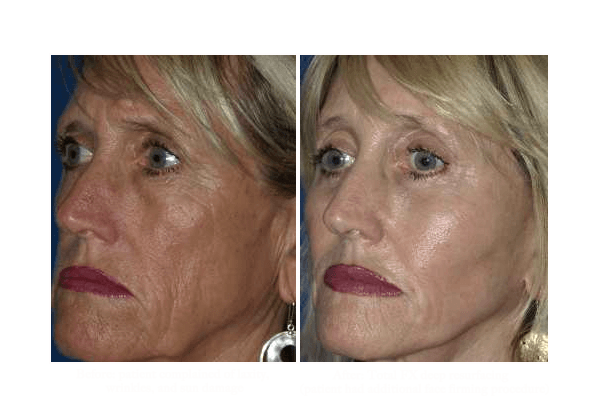
Until recently the downside of the CO2 laser was its very power: along with the amazing skin tightening and smoothing came risks of skin color changes and prolonged redness. This all changed when Lumenis introduced fractionated CO2 skin resurfacing.
The Ultrapulse CO2 laser from Lumenis (utilized in our San Diego practice) has revolutionized skin resurfacing by fractionating the CO2 laser beam. Fractionating the beam means leaving tiny areas of skin untreated to allow rapid healing and lower any potential risks. This fractionated CO2 treatment, when performed superficially, is called “Active FX,” to reflect a rapid return to your “active lifestyle.”
In addition to fractionating the laser treatment, the Ultrapulse also has the ability to narrow the beam, allowing it to go deeper into the skin to cause more tightening and collagen growth. This modality is called “Deep FX.”
By combining Active FX and Deep FX in a single treatment, patients are able to achieve the unmatched results of a deep CO2 laser peel with the safety and low downtime that comes with fractionating the laser. This treatment is called “Total FX.”
Example of Total FX™ Skin Resurfacing:
*Before and after photos and testimonials on this website are from actual patients who have given permission to have their photos/testimonials published. These photos and testimonials are for illustrative purposes only and no prediction of outcome is implied. Individual results may vary.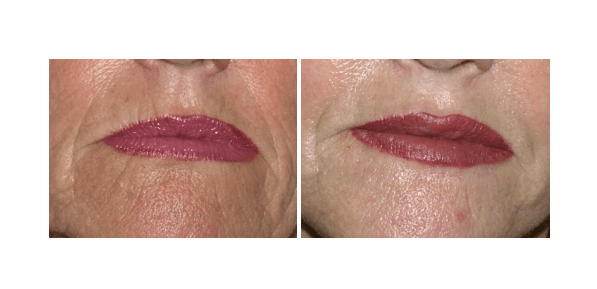
Results rival traditional CO2, but with faster healing.
*Recovery time for a deep laser peel is generally 7-10 days. Our San Diego plastic surgery practice historically has utilized two laser systems for deep resurfacing: the Erbium: YAG laser and the CO2 laser. The Ultrapulse CO2 laser from Lumenis, with the Total FX (Active FX plus Deep FX) application generally provides superior results with minimal risk of complications, and is our most commonly used laser for deep resurfacing (as well as light resurfacing).
*Deep laser skin resurfacing may take between 20 to 30 minutes. Patients are discharged home shortly after the procedure, and are advised to apply cool compresses to the skin, as well as a moisturizing ointment. Laser resurfacing is generally less uncomfortable than a deep chemical peel, and patients usually have minimal discomfort after the first twenty-four hours.
*Over the first week, it is normal to experience crusting and redness as the outer skin layers become separated and are replaced by new skin. Following this, the skin appears somewhat pink and sensitive for several weeks, however most patients can resume applying makeup at 7-10 days if desired.
Erbium: YAG Laser
The Erbium: YAG laser uses light of a 2940 nm wavelength which is readily absorbed by water in our cells. It treats light-skinned to moderately dark or olive-skinned patients with little to no risk of hypo pigmentation (permanent skin lightening) and very little risk of hyper pigmentation (darkening of skin) or scarring in experienced hands. This laser can achieve dramatic results which compare with CO2 laser in some cases.
Example of Erbium Laser Skin Resurfacing:
*Before and after photos and testimonials on this website are from actual patients who have given permission to have their photos/testimonials published. These photos and testimonials are for illustrative purposes only and no prediction of outcome is implied. Individual results may vary.
Note improvement of sun damage and wrinkles. This is an example of deep resurfacing. Skin heals in 7-10 days. Mild redness may persist longer.
ResurFX™ Fractional Laser Resurfacing
ResurFX™ by Lumenis® uses fractional laser technology to target the most common signs of aging for smoother, more youthful-looking skin. Using state-of-the-art non-ablative technology, this laser resurfacing treatment stimulates collagen production for lasting improvement from the inside-out. This helps patients minimize their unwanted fine lines, wrinkles and scars.
Unlike more invasive laser resurfacing technologies (such as CO2 laser resurfacing), this treatment offers noticeable improvement after one pass with minimal downtime and discomfort after treatment. And, with the use of CoolScan™ technology, the treatment itself is more comfortable as the system is monitored to prevent overheating.
Points to consider when choosing a doctor or office for skin resurfacing:
Two main factors determine the quality of results achieved with laser skin resurfacing:
- The Quality of the Laser
- The skill and experience of the Physician
While many laser platforms offer CO2 and Erbium skin resurfacing, few offer FRACTIONATED technology, and fewer still offer optimum power and spot size settings which produce exceptional results and minimal downtime. The Ultrapulse Laser from Lumenis was the first laser to offer fractionated CO2 skin resurfacing and has made significant progress in optimizing treatment parameters for results and safety. Non-ablative lasers (lasers that do not remove the outer layer of skin) have historically not produced results that compare to traditional-strength CO2 or Erbium lasers.
While laser technology has become very advanced over the years, the process of resurfacing is by no means “automatic.” The best and most expensive laser technology can be useless if the physician is not experienced and well-trained.
For example, the price of “Active FX” treatment may vary widely in a community. This is because there is great variation in results depending on which parameters are dialed into the laser, how many passes are done over the skin etc. Similarly, a “Total FX” treatment requires even more variables and is even more user-dependent.
Choosing an inexperienced practitioner in a non-surgical spa setting may lead to a “too” superficial treatment, with minimal results. Worse than this however is an overzealous treatment with subsequent side effects or complications.
Risks of Laser Skin Resurfacing
Choosing the right doctor with the right laser goes a long way toward minimizing any complications, however patients should be aware of some basic risks:
- Prolonged Redness. Several days to one to two weeks of redness may be completely normal depending on depth of treatment, however when redness persists for over a month this is commonly referred to as “prolonged erythema” or prolonged redness. This is generally considered minor and disappears with time or further treatment.
- Hyperpigmentation. Occasionally the skin may respond to the laser treatment by laying down excessive pigment in the treated areas. This splotchy brown color is called hyperpigmentation. While very uncommon with fractionated lasers, this tends to occur in darker -skinned individuals or ethnic skin types. Hyperpigmentation generally resolves with time and with bleaching cream.
- Infection. Infection is a rare complication, but if it occurs before the skin has healed can lead to scarring. The risk is lowered by keeping the healing skin clean at all times and using prophylactic antibiotics for the first week.
- Hypopigmentation. The opposite of hyperpigmentation, hypopigmentation is the (permanent) loss of pigment in the skin, leading to lightened areas of skin. This was very common with traditional deep CO2 laser skin resurfacing but fractionated technology has largely eliminated this risk.
- Scarring. A very rare complication, scarring can be caused by very high laser energy and is more common in areas of thinner skin.
![]()
CHEMICAL PEEL
*Chemical peels are a skin resurfacing option, and include light, medium, and deep peels. The peel works by removing the outer layer of skin, and causing changes in the deeper layer (including new collagen formation) that may actually tighten the skin. Medium and deep peels are performed by Dr. David in our San Diego office under local anesthesia or mild to deep sedation. Medium depth (TCA-Jessner) peels are excellent for fine wrinkles and splotchy skin changes, and deep peels (phenol) can produce dramatic improvement in deeper wrinkles. A new layer of skin develops in 5-7 days, and makeup can usually be applied in 10-14 days.
DERMABRASION
*Along with lasers and chemical peels, dermabrasion represents another important tool for skin resurfacing. Similar to how wood is sanded to make it smoother, dermabrasion (which is done with much finer instruments!) works to even out the skin surface. Usually performed under local anesthesia with sedation in our La Jolla, San Diego office, dermabrasion can work very well for raised scars, acne scars, wrinkles, and other surface irregularities. Recovery time is similar to that for laser resurfacing.
MICRODERMABRASION
*Microdermabrasion is an exciting “no-downtime” procedure that rejuvenates and refreshes skin of the face and neck. Tiny crystals of aluminum oxide are used to gently exfoliate the outer layers of skin. Following this the crystals, along with dead skin particles, are eliminated by the machine. Most patients experience little or no redness with the procedure, which disappears shortly thereafter. Busy patients can return immediately to work or home.
Microdermabrasion can erase fine lines and age spots, as well as improve acne scars. Skin texture generally becomes softer and more uniform or smooth. A typical treatment lasts under thirty minutes, and can be combined with a facial or light peel . Five to six treatments are performed at biweekly intervals.
For laser skin resurfacing in San Diego or La Jolla California contact Dr. Roy David today at 858.658.0595.
What Microdermabrasion Can do
- Reduce fine lines or wrinkles.
- Improve sun spots (photo-damage).
- Improve superficial scars and acne.
- Improve overall skin texture.
What Microdermabrasion Can not Do
- Eliminate deep folds or deep wrinkles.
- Resolve deep hyperpigmentation.
- Treat deep “ice pick” scars.
